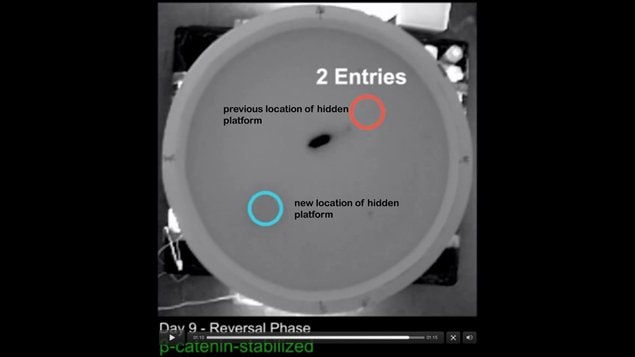Sometimes in order to learn new things, we have to forget old things, or at least “file them away in the back of our mind”. Synapses are the pathways between neurons and are routes for creating learning and memory. But if those “old” synapses don’t disconnect or reduce, it can hinder developing new learning and memory.
Fergil Mills is a PhD Candidate in the Department of Cellular and Physiological Sciences, Faculty of Medicine, University of British Columbia.
ListenThe role of synapses in the brain’s functioning are becoming increasingly known.

We are now beginning to understand that deficiencies in synaptic function play an important role in psychiatric and neurodegenerative diseases such as schizophrenia, Alzheimer’s, Parkinson’s and Huntington’s disease.
In addition, proteins play an important role in creating synapses. But if too much of a particular protein prevents a synapse from “letting go”, it hinders the brain’s ability to create new pathways and thus new learning. The researchers call this condition of not reducing is size or letting go when no longer as being a “sticky” synapse.
B-catenin is normally produced in the brain and helps in developing synapses. But what happens when there is too much?
In this case researchers found that a high level of beta-catenin prevented the normal reduction in a synapse (pathway) In other words, a limited ability to close or reduce pathways (memory and learning) no longer useful, and hindering the ability to create new synapses, learning and memory.
The research was published in the latest edition of in the latest issue of the Proceedings of the National Academy of Sciences of the United States of America, entitled “Cognitive flexibility and long-term depression (LTD) are impaired following B-catenin stabilization in vivo”
In this test, both “normal” mice and mice with high B-catenin, were placed in a large tank of water, where after swimming around, they discovered a platform just below the surface where they could rest. After repeating the process, the mice “learned” where the hidden platform was in the tank, and swam there directly.
When the hidden platform was moved elsewhere in the tank, the normal mice quickly learned the old location was no longer valid. When the normal mice found the new location, and after having learned or remembered its new location, would swim directly to it in subsequent tests. The B-catenin mice however with sticky synapses which failed to reduce, continued to remember the old location and had difficulty in learning and remembering the new location.
The research provides another important clue as to how the brain works and how eventually such diseases as Alzheimers and Parkinson’s may be mitigated or overcome.
Fergil Mills is now continuing the research to see how this might be connected to addictions, which he says is to some extent a learning or conditioning that has gone badly awry.







For reasons beyond our control, and for an undetermined period of time, our comment section is now closed. However, our social networks remain open to your contributions.